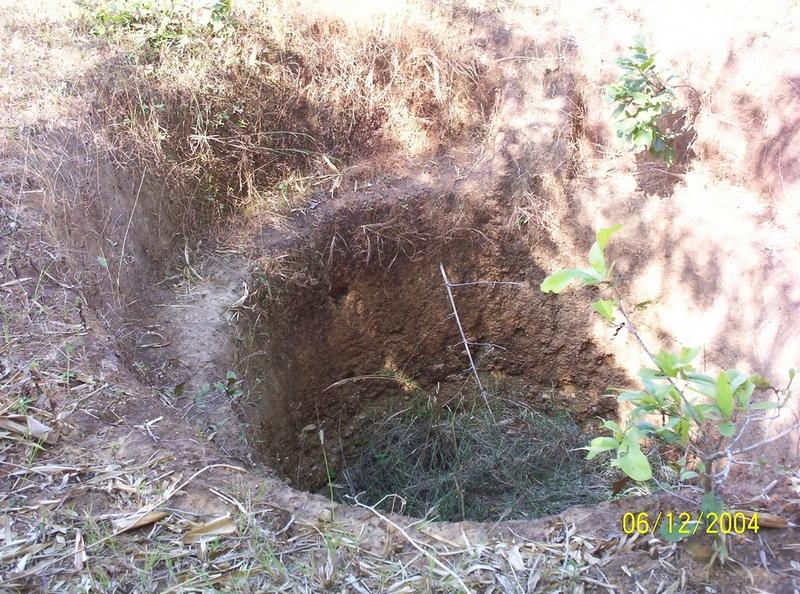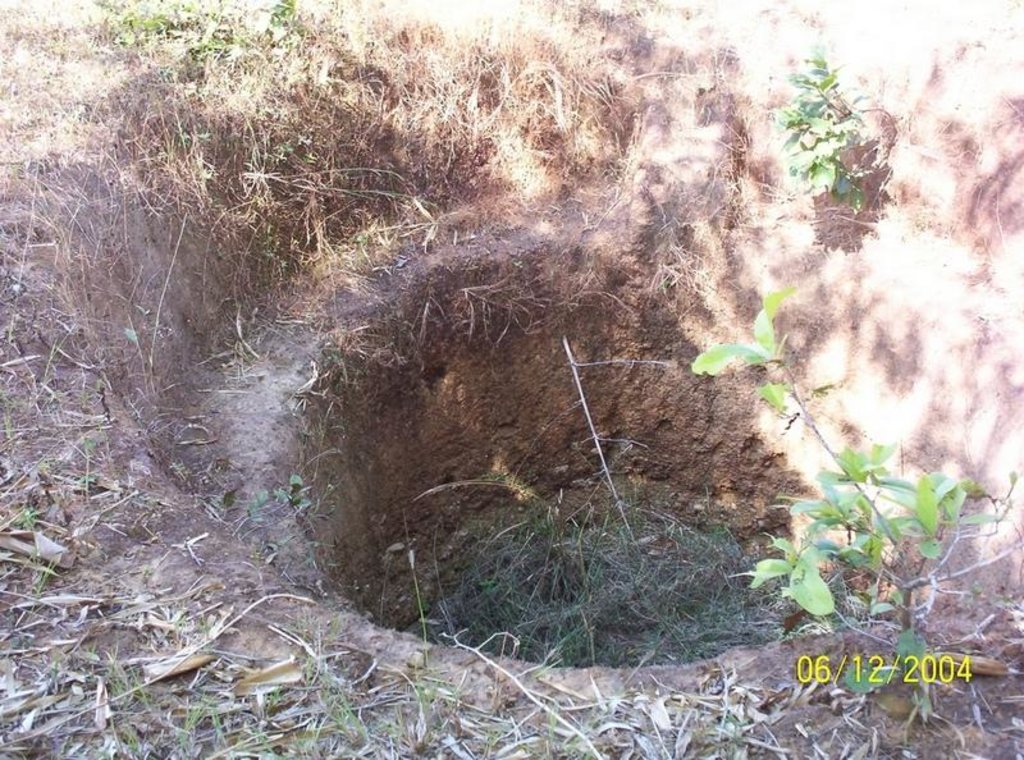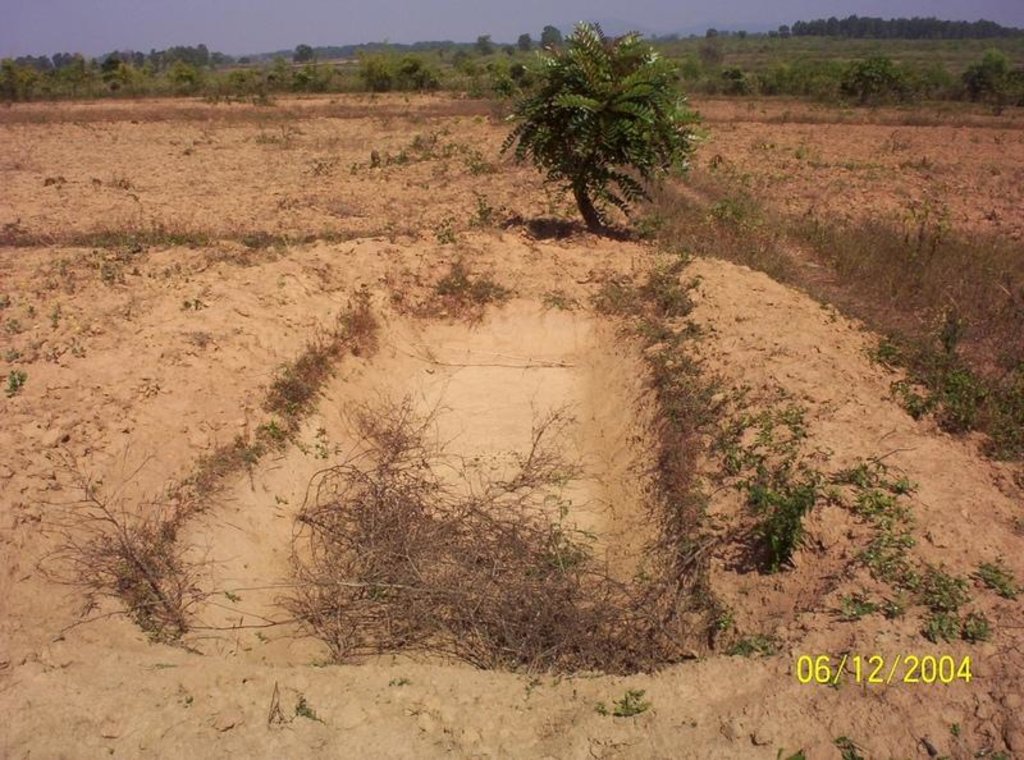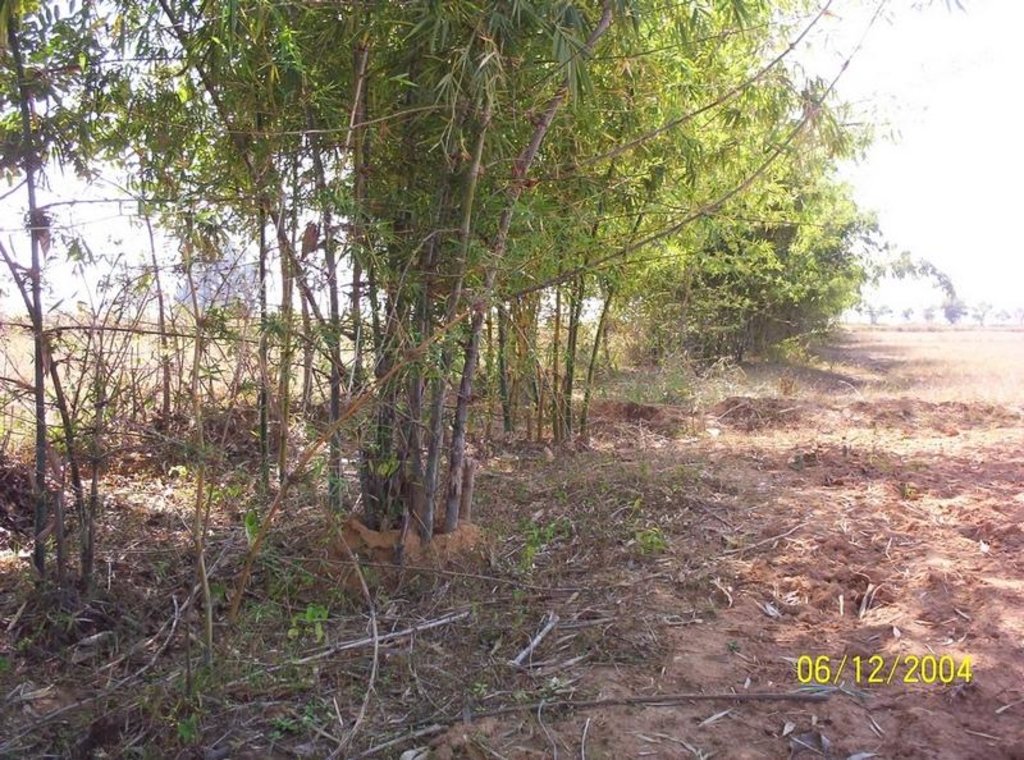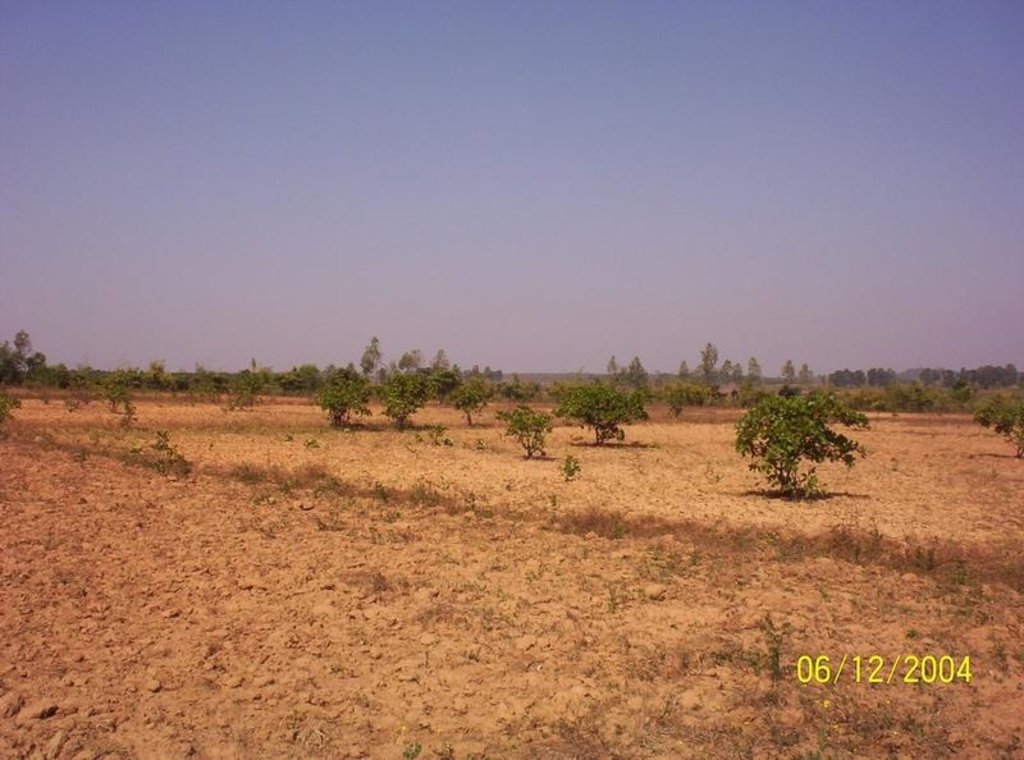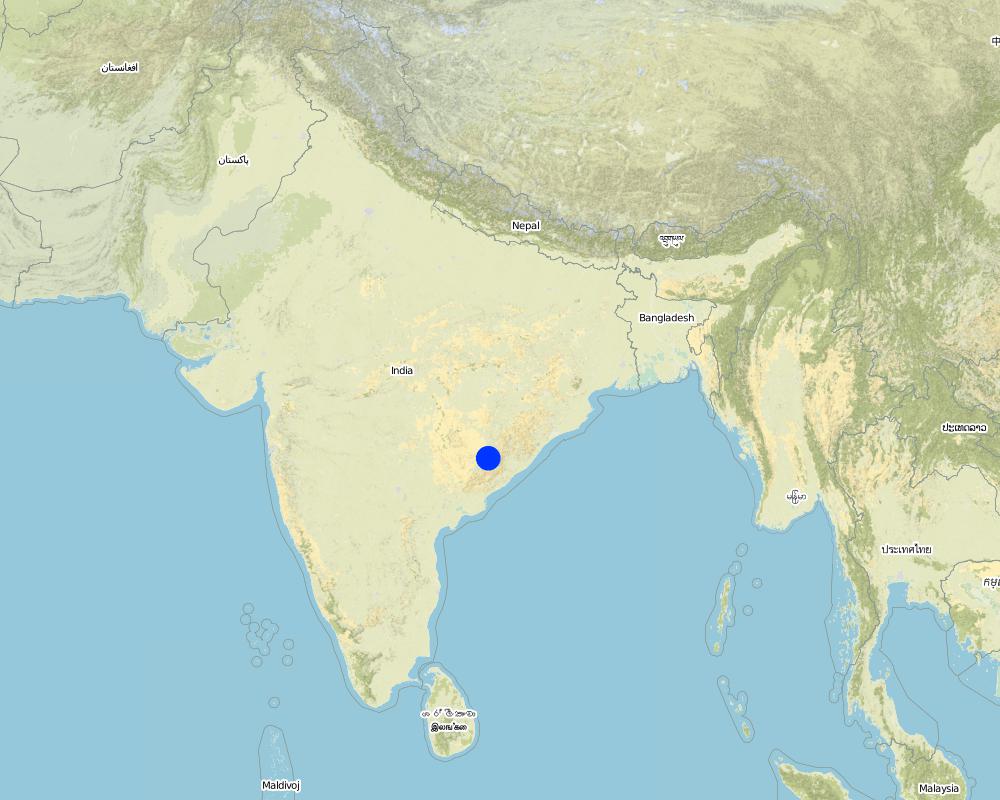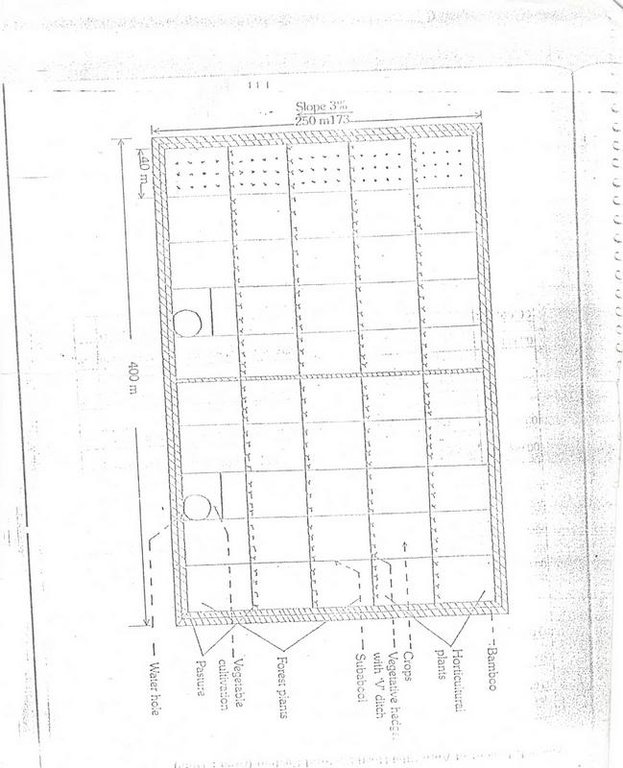Integrated Farming System [ប្រទេសឥណ្ឌា]
- ការបង្កើត៖
- បច្ចុប្បន្នភាព
- អ្នកចងក្រង៖ Srikanta Kumar Parida
- អ្នកកែសម្រួល៖ –
- អ្នកត្រួតពិនិត្យច្រើនទៀត៖ Fabian Ottiger, Alexandra Gavilano
technologies_1085 - ប្រទេសឥណ្ឌា
ពិនិត្យមើលគ្រប់ផ្នែក
ពង្រីកមើលទាំងអស់ បង្រួមទាំងអស់1. ព័ត៌មានទូទៅ
1.2 ព័ត៌មានលម្អិតពីបុគ្គលសំខាន់ៗ និងស្ថាប័នដែលចូលរួមក្នុងការវាយតម្លៃ និងចងក្រងឯកសារនៃបច្ចេកទេស
អ្នកជំនាញឯកទេស SLM:
Pradhan Gandhi
ប្រទេសឥណ្ឌា
អ្នកជំនាញឯកទេស SLM:
Pradhan Damodar
ប្រទេសឥណ្ឌា
អ្នកជំនាញឯកទេស SLM:
Panda R.K
Central Soil & Water Conservation Research & Training Institute
ប្រទេសឥណ្ឌា
អ្នកជំនាញឯកទេស SLM:
Mohanty B.B
Sarvodaya Samiti
ប្រទេសឥណ្ឌា
ឈ្មោះអង្គភាពមួយ (ច្រើន) ដែលបានចងក្រងឯកសារ/ វាយតម្លៃបច្ចេកទេស (បើទាក់ទង)
Sarvodaya Samiti - ប្រទេសឥណ្ឌា1.3 លក្ខខណ្ឌទាក់ទងទៅនឹងការប្រើប្រាស់ទិន្នន័យដែលបានចងក្រងតាមរយៈ វ៉ូខេត
អ្នកចងក្រង និង(បុគ្គលសំខាន់ៗ)យល់ព្រមទទួលយកនូវលក្ខខណ្ឌនានាទាក់ទងទៅនឹងការប្រើប្រាស់ទិន្នន័យដែលបានចងក្រងតាមរយៈវ៉ូខេត:
បាទ/ចា៎
1.5 ការយោងទៅលើកម្រងបញ្ជីសំណួរ (មួយ ឬច្រើន) នៃវិធីសាស្ត្រផ្សព្វផ្សាយ SLM (ដែលបានចងក្រងដោយទស្សនៈពិភពលោកស្តីពីវិធីសាស្ត្រ និងបច្ចេកទេសងអភិរក្ស WOCAT)
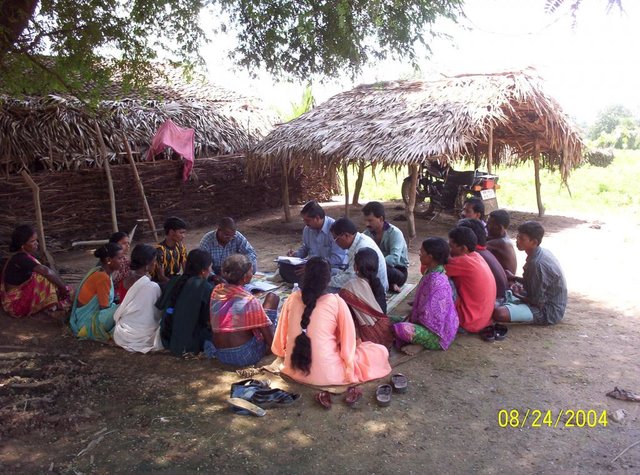
PARTICIPATORY APPROACH IN IDCWDP, DANIDA [ប្រទេសឥណ្ឌា]
Participatory approach for holistic and intigrated development of the defined area on watershed basis involving all level of stake holders.
- អ្នកចងក្រង៖ Srikanta Kumar Parida
2. ការពណ៌នាពីបច្ចេកទេស SLM
2.1 ការពណ៌នាដោយសង្ខេបពីបច្ចេកទេស
និយមន័យបច្ចេកទេស:
Growing of crops for food, fodder trees and fibre forest in a compact patch.
2.2 ការពណ៌នាលម្អិតពីបច្ចេកទេស
ការពណ៌នា:
This technology has mainly to be applied on 5 Ha.of private waste land of poor farmers to increase production. This technology focuses on life fencing, planting of trees for both timber and food varieties, land development, water availability and green manuring. Three line bamboo plantation has been done by laying method at all along the boundary line. Agave also planted at boundary line to give additional protection. Then proper compartmentation has been done keeping intact the total area of individual land holders. Here 'V' ditches has been provided accross the slope of total land. Some fruit and fodder, forest trees were planted all along the bunds and inside the field. The density of tree plantation at crop field is less. So as to facilitate crop cultivation. Gullies has also been arrested by construction of gully control structures. One waterhole has been excavated for life saving irrigation. To manage field waste and to get green manure three compost pits also established.
Establishment / maintenance activities and inputs: After several meeting and interaction with village people, this technology has been established. All the land users where technology is applied were fully engaged for every construction work. So as to have a clear understaing of each small intervention. As this technology uses locally available materials, its maintenance by land users become easy.
Natural / human environment: Here Soil & Water Conservation has been given importance, hence more vegetative cover has been noticed in and around technology area. Increase of soil fertility has also been noticed. Complete barren land conveted in to crop land. So the technology has positive impact on the environment undoubtedly.
2.3 រូបភាពនៃបច្ចេកទេស
2.5 ប្រទេស/តំបន់/ទីតាំងកន្លែង ដែលបច្ចេកទេសត្រូវបានអនុវត្ត និងបានគ្រប់ដណ្តប់ដោយការវាយតម្លៃនេះ
ប្រទេស:
ប្រទេសឥណ្ឌា
តំបន់/រដ្ឋ/ខេត្ត:
Orissa
បញ្ជាក់បន្ថែមពីលក្ខណៈនៃទីតាំង:
Orissa
បញ្ជាក់ពីការសាយភាយនៃបច្ចេកទេស:
- ត្រូវបានផ្សព្វផ្សាយត្រឹមតំបន់មួយ
ប្រសិនបើបច្ចេកទេសត្រូវបានសាយភាយពាសពេញតំបន់ណាមួយ បញ្ជាក់ទំហំផ្ទៃដីអនុវត្តន៍ (គិតជា គ.ម2):
0,05
ប្រសិនបើមិនច្បាស់ពីទំហំផ្ទៃដី សូមធ្វើការប៉ាន់ប្រម៉ាណ:
- < 0.1 គម2 (10 ហិកតា)
មតិយោបល់:
Total area covered by the SLM Technology is 0.05 km2.
Map
×2.6 កាលបរិច្ឆេទនៃការអនុវត្ត
ប្រសិនបើមិនច្បាស់ឆ្នាំ សូមបញ្ជាក់កាលបរិច្ឆេទដែលប្រហាក់ប្រហែល:
- តិចជាង 10ឆ្នាំមុន (ថ្មី)
2.7 ការណែនាំពីបច្ចេកទេស
សូមបញ្ជាក់តើបច្ចេកទេសត្រូវបានណែនាំឱ្យអនុវត្តដោយរបៀបណា:
- តាមរយៈគម្រោង / អន្តរាគមន៍ពីខាងក្រៅ
មតិយោបល់ (ប្រភេទនៃគម្រោង ។ល។):
Project SWC Specialist utilizing the earlier experience in the project and other area.
3. ចំណាត់ថ្នាក់នៃបច្ចេកទេស SLM
3.1 គោលបំណងចម្បង (១ ឬច្រើន) នៃបច្ចេកទេសនេះ
- ធ្វើឱ្យប្រសើរឡើងនូវផលិតកម្ម
- កាត់បន្ថយ, បង្ការ, ស្តារឡើងវិញនូវការធ្លាក់ចុះគុណភាពដី
3.2 ប្រភេទដីប្រើប្រាស់មួយប្រភេទ (ច្រើនប្រភេទ) ដែលបានអនុវត្តបច្ចេកទេស
ដីប្រើប្រាស់ចម្រុះនៅលើដីតែមួយ:
បាទ/ចា៎

ដីដាំដំណាំ
- ដំណាំរយៈពេលវែង (មិនមែនឈើ)
- ប្រភេទដើមឈើធំៗ និងដើមឈើតូចៗ
ដំណាំរយៈពេលវែង (មិនមែនឈើ) - បញ្ជាក់ប្រភេទដំណាំ:
- agave / sisal

ដីព្រៃ/ដីដាំដើមឈើ
- ការដាំដើមឈើ ការដាំព្រៃឡើងវិញ
ការដាំដើមឈើ ការដាំដើមឈើឡើងវិញ៖ បញ្ជាក់ពីប្រភេទក្នុងតំបន់ និងប្រភេទលុប:
- ឯកវប្បកម្មដែលប្រើពូជក្នុងតំបន់
ប្រភេទឈើ:
- ឫស្សី

ដីខ្សោះជីជាតិ
សូមបញ្ជាក់:
Wastelands, deserts, glaciers, swamps, recreation areas, etc
មតិយោបល់:
Major land use problems (compiler’s opinion): Due to slope and lack of vegetation cover, majority top soil were lost and many gullies also formed as a result there was no scope for cultivation.
Major land use problems (land users’ perception): The soil was hard, no fertility, land is slopy. So there was no scope for any kind of cultivation in the same patch of land.
Constraints of wastelands / deserts / glaciers / swamps: Slope, Soil loss
Number of growing seasons per year: 1
Longest growing period in days: 150 Longest growing period from month to month: Jun - Oct
3.5 ក្រុម SLM ដែលបច្ចេកទេសស្ថិតនៅក្នុង
- វិធានការអនុវត្តកាត់ទទឹងទីជម្រាល
- ការស្តុកទុកទឹក
- ការគ្រប់គ្រងប្រព័ន្ធស្រោចស្រព (រួមទាំងការផ្គត់ផ្គង់ទឹក ប្រព័ន្ធបង្ហូរ)
3.6 វិធានការ SLM ដែលបញ្ចូលនូវបច្ចេកទេស

វិធានការរចនាស័ម្ពន្ធ
មតិយោបល់:
Main measures: structural measures
Secondary measures: agronomic measures, vegetative measures
Type of agronomic measures: manure / compost / residues
Type of vegetative measures: aligned: -contour, aligned: -graded strips *<sup>3</sup>, aligned: -against wind
3.7 កំណត់ប្រភេទនៃការធ្លាក់ចុះគុណភាពដីសំខាន់ៗដែលបច្ចេកទេសនេះបានដោះស្រាយ

ការហូរច្រោះដីដោយសារទឹក
- Wt: ការបាត់ដីស្រទាប់លើដោយការហូរច្រោះ
- Wg: ការកកើតឡើងនូវកំទេចកំទីដីស្រទាប់ក្រោម

ការធ្លាក់ចុះសារធាតុគីមីក្នុងដី
- Cn: ការថយចុះជីជាតិ និងកាត់បន្ថយបរិមាណសារធាតុសរីរាង្គ (មិនកើតឡើងដោយការហូរច្រោះទេ)
មតិយោបល់:
Main type of degradation addressed: Wt: loss of topsoil / surface erosion
Secondary types of degradation addressed: Wg: gully erosion / gullying, Cn: fertility decline and reduced organic matter content
Main causes of degradation: other human induced causes (specify) (agricultural causes - Coordination of traditional method of agricultural practices like along the slope, use of long term local varieity of seeds etc.), poverty / wealth (lack of captial)
Secondary causes of degradation: education, access to knowledge and support services (lack of knowledge), Erosion problem, Common social practices
3.8 ការពារ កាត់បន្ថយ ឬស្តារឡើងវិញនៃការធ្លាក់ចុះគុណភាពដី
បញ្ជាក់ពីគោលដៅរបស់បច្ចេកទេស ដែលផ្តោតទៅការធ្លាក់ចុះគុណភាពដី:
- ការជួសជុល/ ស្តារឡើងវិញនៃឱនភាពដីធ្ងន់ធ្ងរ
មតិយោបល់:
Main goals: rehabilitation / reclamation of denuded land
4. បច្ចេកទេសជាក់លាក់ សកម្មភាពអនុវត្ត ធាតុចូល និងថ្លៃដើម
4.1 គំនូសបច្ចេកទេសនៃបច្ចេកទេសនេះ
លក្ខណៈពិសេសនៃបច្ចេកទេស (ទាក់ទងនឺងគំនូរបច្ចេកទេស):
Diagram showing different soil conservation measures
Location: Maliguda. Koraput/Orissa/India
Date: 15/3/2005
Technical knowledge required for field staff / advisors: moderate
Technical knowledge required for land users: low
Main technical functions: control of dispersed runoff: retain / trap, control of concentrated runoff: retain / trap
Secondary technical functions: reduction of slope length, increase of surface roughness, increase in soil fertility
Agronomic measure: Green Fencing
Material/ species: Bamboo, Agave
Remarks: Two type of Bamboo and Agave provided all round the technology area
Manure / compost / residues
Remarks: 3 compost pits has been established.
Agronomic measure: Tillage with country plough
Aligned: -contour
Vegetative material: G : grass
Number of plants per (ha): 15000
Vertical interval between rows / strips / blocks (m): 0.25
Spacing between rows / strips / blocks (m): 0.25
Vertical interval within rows / strips / blocks (m): 0.3
Width within rows / strips / blocks (m): 0.3
Aligned: -graded strips
Vegetative material: F : fruit trees / shrubs, O : other
Number of plants per (ha): 114
Vertical interval within rows / strips / blocks (m): 9.15
Width within rows / strips / blocks (m): 9.15
Aligned: -against wind
Vegetative material: T : trees / shrubs
Number of plants per (ha): 1
Vertical interval between rows / strips / blocks (m): 1
Spacing between rows / strips / blocks (m): 1
Vertical interval within rows / strips / blocks (m): 1
Width within rows / strips / blocks (m): 0.33
Trees/ shrubs species: Bamboo, Agave (Sisal)
Fruit trees / shrubs species: Mango and Cashew
Other species: Teak, S.Glauca, Subabul
Slope (which determines the spacing indicated above): 4.00%
If the original slope has changed as a result of the Technology, the slope today is (see figure below): 2.00%
Wall/ barrier
Spacing between structures (m): 6
Depth of ditches/pits/dams (m): 0.3
Width of ditches/pits/dams (m): 1.25
Length of ditches/pits/dams (m): 1.7
Structural measure: Pits
Depth of ditches/pits/dams (m): 25
Width of ditches/pits/dams (m): 0.9
Structural measure: 'V'Ditch with bund
Vertical interval between structures (m): 20
Spacing between structures (m): 15
Depth of ditches/pits/dams (m): 0.6
Width of ditches/pits/dams (m): 0.6
Length of ditches/pits/dams (m): 500
Height of bunds/banks/others (m): 1
Width of bunds/banks/others (m): 1.5
Construction material (earth): Bund constructed with earth
Construction material (other): Barries established with bamboo along the boundary for wind break as well as fence.
Slope (which determines the spacing indicated above): 4%
If the original slope has changed as a result of the Technology, the slope today is: 2%
Vegetation is used for stabilisation of structures.
ឈ្មោះអ្នកនិពន្ធ:
Parida S.K, Koraput,Orissa, In
4.2 ព័ត៌មានទូទៅដែលពាក់ព័ន្ធនឹងការគណនាធាតុចូល និងថ្លៃដើម
ផ្សេងៗ/ រូបិយប័ណ្ណជាតិ (បញ្ជាក់):
Rupees
បើពាក់ព័ន្ធសូមកំណត់អត្រាប្តូរប្រាក់ពីដុល្លាទៅរូបិយប័ណ្ណតំបន់ (ឧ. 1 ដុល្លារ = 79.9 រៀលនៃរូបិយប័ណ្ណប្រេស៊ីល) ៖ 1 ដុល្លារ =:
0,45
កំណត់ថ្លៃឈ្នួលជាមធ្យមនៃការជួលកម្លាំងពលកម្មក្នុងមួយថ្ងៃ:
0.88
4.3 សកម្មភាពបង្កើត
| សកម្មភាព | រយៈពេល (រដូវកាល) | |
|---|---|---|
| 1. | Collection of matured bamboo and laying 9" below earth all along boundary in 3 rows | May |
| 2. | Collection of vertiver strips, trees from local nursery | July |
| 3. | Planting grasses, trees | July to Aug |
4.4 ថ្លៃដើម និងធាតុចូលដែលត្រូវការសម្រាប់ការបង្កើតបច្ចេកទេស
| បញ្ជាក់ពីធាតុចូល | ឯកតា | បរិមាណ | ថ្លៃដើមក្នុងមួយឯកតា | ថ្លៃធាតុចូលសរុប | % នៃថ្លៃដើមដែលចំណាយដោយអ្នកប្រើប្រាស់ដី | |
|---|---|---|---|---|---|---|
| កម្លាំងពលកម្ម | Labour | ha | 1,0 | 313,0 | 313,0 | |
| សម្ភារៈ | Animal traction | ha | 1,0 | 7,72 | 7,72 | |
| សម្ភារៈដាំដុះ | Seeds | ha | 1,0 | 39,22 | 39,22 | |
| សម្ភារៈដាំដុះ | Seedlings | ha | 1,0 | 99,0 | 99,0 | |
| ជី និងសារធាតុពុល | Biocides | ha | 1,0 | 12,33 | 12,33 | |
| ជី និងសារធាតុពុល | Compost/manure | ha | 1,0 | 32,0 | 32,0 | |
| ជី និងសារធាតុពុល | Others | ha | 1,0 | 193,33 | 193,33 | |
| សម្ភារៈសាងសង់ | Stone | ha | 1,0 | 13,0 | 13,0 | |
| សម្ភារៈសាងសង់ | Earth | ha | 1,0 | 55,55 | 55,55 | |
| សម្ភារៈសាងសង់ | Pitcher | ha | 1,0 | 13,55 | 13,55 | |
| ផ្សេងៗ | Compost pit | ha | 1,0 | 5,0 | 5,0 | |
| ថ្លៃដើមសរុបក្នុងការបង្កើតបច្ចេកទេស | 783,7 | |||||
| ថ្លៃដើមសរុបក្នុងការបង្កើតបច្ចេកទេសគិតជាដុល្លារ | 1741,56 | |||||
មតិយោបល់:
Duration of establishment phase: 48 month(s)
4.5 សកម្មភាពថែទាំ
| សកម្មភាព | ពេលវេលា/ ភាពញឹកញាប់ | |
|---|---|---|
| 1. | Tillage | Jan to June / Twice |
| 2. | Line showing | July / Once |
| 3. | Weeding | Sept / Once |
| 4. | Fertilizer Application | Sept to Oct / Once |
| 5. | Harvesting | Nov / Once |
| 6. | Manuring, weeding and hoeing | September / |
| 7. | Catchpit, pitcher irrigation | November / |
| 8. | Spraying with plant protection materials | December / |
4.6 កំណត់ថ្លៃដើមសម្រាប់ការថែទាំ/ សកម្មភាពរបស់បច្ចេកទេស (ក្នុងរយៈពេលមួយឆ្នាំ)
មតិយោបល់:
Convert of degraded fellow private land to a cultivable land on adopting new low cost technology in a 5 Ha. Compact patch. The following benefits -
(1) Slope of the land reduced.
(2) Land protected from severe soil erosion.
(3) Increase the moisture region of the soil.
(4) Soil fertility/ standy increased farmers achieved the minimum common needs (basic) common needy product from the technology i.e food, fuel and fodder etc.
4.7 កត្តាសំខាន់បំផុតដែលមានឥទ្ធិពលដល់ការចំណាយ
ពណ៌នាពីកត្តាប៉ះពាល់ចម្បងៗទៅលើថ្លៃដើម:
(1) High slope:- Slope reduced Nos. of structure adopted. Labour engagement are expose of sub-surface soil used Nos. of planting materials.
(2) Diference:- The planting materials are not locally available and transported from 20 K.Ms distance (Bamboo, Vertiver, Mango, Cashew)
(3) Comunication was not up to SWC spot during the establishment period.
5. លក្ខណៈបរិស្ថានធម្មជាតិ និងមនុស្ស
5.1 អាកាសធាតុ
បរិមាណទឹកភ្លៀងប្រចាំឆ្នាំ
- < 250 មម
- 251-500 មម
- 501-750 មម
- 751-1,000 មម
- 1,001-1,500 មម
- 1,501-2,000 មម
- 2,001-3,000 មម
- 3,001-4,000 មម
- > 4,000 មម
តំបន់កសិអាកាសធាតុ
- មានភ្លៀងមធ្យម
Eastern Ghat High Land
5.2 សណ្ឋានដី
ជម្រាលជាមធ្យម:
- រាបស្មើ (0-2%)
- ជម្រាលតិចតួច (3-5%)
- មធ្យម (6-10%)
- ជម្រាលខ្ពស់បន្តិច (11-15%)
- ទីទួល (16-30%)
- ទីទួលចោត (31-60%)
- ទីទួលចោតខ្លាំង (>60%)
ទម្រង់ដី:
- ខ្ពង់រាប
- កំពូលភ្នំ
- ជម្រាលភ្នំ
- ជម្រាលទួល
- ជម្រាលជើងភ្នំ
- បាតជ្រលងភ្នំ
តំបន់តាមរយៈកម្ពស់ :
- 0-100 ម
- 101-500 ម
- 501-1,000 ម
- 1,001-1,500 ម
- 1,501-2,000 ម
- 2,001-2,500 ម
- 2,501-3,000 ម
- 3,001-4,000 ម
- > 4,000 ម
មតិយោបល់ និងបញ្ចាក់បន្ថែមអំពីសណ្ឋានដី :
Landforms: Hill slopes (ranked 1), ridges (ranked 2) and valley floors (ranked 3)
Slopes on average: Moderate (land Slope having undulated topography)
5.3 ដី
ជម្រៅដីជាមធ្យម:
- រាក់ខ្លាំង (0-20 សម)
- រាក់ (21-50 សម)
- មធ្យម (51-80 សម)
- ជ្រៅ (81-120 សម)
- ជ្រៅខ្លាំង (> 120 សម)
វាយនភាពដី (ស្រទាប់លើ):
- គ្រើម/ មានពន្លឺ (ខ្សាច់)
- មធ្យម (ល្បាយ, ល្បាប់)
សារធាតុសរីរាង្គនៅស្រទាប់ដីខាងលើ:
- ទាប (<1%)
បើអាចសូមភ្ជាប់ការពណ៌នាពីដីឱ្យបានច្បាស់ ឬព័ត៌មានដែលអាចទទួលបាន ឧ. ប្រភេទដី, pH ដី/ ជាតិអាស៊ីត, សមត្ថភាពផ្លាស់ប្តូរកាចុង, វត្តមាននីត្រូសែន, ភាពប្រៃ ។ល។:
Soil texture: Medium (ranked 1, sandy loam to silty clay loam) and coarse/light
Soil fertility: Low (ranked 1) and medium (ranked 2)
Topsoil organic matter: Low (loss of top soils due to heavy run off, ranked 1)
Soil drainage/infiltration: Medium (soil varies from loam to silly clay loam, ranked 2)
Soil water storage capacity: Low
5.6 លក្ខណៈនៃអ្នកប្រើប្រាស់ដីដែលអនុវត្តបច្ចេកទេស
ចំណូលក្រៅកសិកម្ម:
- 10-50% នៃចំណូល
កម្រិតជីវភាព:
- មិនល្អ
- មធ្យម
សូមបញ្ជាក់ពីលក្ខណៈពាក់ព័ន្ធផ្សេងទៀតអំពីអ្នកប្រើប្រាស់ដី:
Population density: < 10 persons/km2
Annual population growth: 2% - 3%
24% of the land users are rich and own 30% of the land.
45% of the land users are average wealthy and own 56% of the land (30% of house hold comes in standard wealth.).
31% of the land users are poor and own 14% of the land (70% of house hold comes below average).
Off-farm income specification: Through various training, interaction with specialist, they acquire more knowledge about other small business like Goatery, Poultry, Pisciculture, Beekeeping, Floriculture and also marketing facility and utilizing these knowledge their off-farm income increase.
5.8 ភាពជាម្ចាស់ដី កម្មសិទ្ធប្រើប្រាស់ដី និងកម្មសិទ្ធប្រើប្រាស់ទឹក
ភាពជាម្ចាស់ដី:
- ឯកជន មានកម្មសិទ្ធ
កម្មសិទ្ធិប្រើប្រាស់ដី:
- ឯកជន
6. ផលប៉ះពាល់ និងការសន្និដ្ឋាន
6.1 ផលប៉ះពាល់ក្នុងបរិវេណអនុវត្តបច្ចេកទេសដែលកើតមាន
ផលប៉ះពាល់លើសេដ្ឋកិច្ចសង្គម
ផលិតផល
ផលិតកម្មដំណាំ
ផលិតកម្មចំណីសត្វ
គុណភាពចំណីសត្វ
ផលិតកម្មឈើ
ចំណូល និងថ្លៃដើម
ចំណូលក្នុងកសិដ្ឋាន
មតិយោបល់/ ការបញ្ជាក់:
Finding market and getting better price f or product
ភាពខុសគ្នាផ្នែកសេដ្ឋកិច្ច
ផលប៉ះពាល់ទៅលើវប្បធម៌សង្គម
ស្ថាប័នសហគមន៍
មតិយោបល់/ ការបញ្ជាក់:
Formation of UG/ SHG
ចំណេះដឹង SLM / ការធ្លាក់ចុះគុណភាពដី
មតិយោបល់/ ការបញ្ជាក់:
Imparting teaching to nearby village people on erosion, loss of top soil and timely aprehension at field
ផលប៉ះពាល់ទៅលើអេកូឡូស៊ី
វដ្តទឹក/លំហូរ
លំហូរទឹកលើផ្ទៃដី
គុណភាពមុន SLM:
50
គុណភាពក្រោយ SLM:
40
ប្រព័ន្ធបង្ហូរទឹក
មតិយោបល់/ ការបញ្ជាក់:
Safe disposal of water.
ដី
សំណើមដី
មតិយោបល់/ ការបញ្ជាក់:
Adopting soil conservation activities
គម្របដី
មតិយោបល់/ ការបញ្ជាក់:
Practising cropping
ការបាត់បង់ដី
គុណភាពមុន SLM:
46
គុណភាពក្រោយ SLM:
20
ការកាត់បន្ថយហានិភ័យនៃគ្រោះមហន្តរាយ និងគ្រោះអាកាសធាតុ
ល្បឿនខ្យល់
មតិយោបល់/ ការបញ្ជាក់:
Planting of bamboo at boundary
ផលប៉ះពាល់ទៅលើអេកូឡូស៊ីផ្សេងៗ
Soil fertility
មតិយោបល់/ ការបញ្ជាក់:
On decomposition of straw
Biodiversity
Seed quality
មតិយោបល់/ ការបញ្ជាក់:
Better procurement of good quality of seeds
6.2 ផលប៉ះពាល់ក្រៅបរិវេណអនុវត្តបច្ចេកទេសដែលកើតមាន
លំហូរទឹកដែលអាចប្រើប្រាស់បាននៅរដូវប្រាំង
មតិយោបល់/ ការបញ្ជាក់:
Stream flow remains up to February
ទឹកជំនន់ខ្សែទឹកខាងក្រោម
មតិយោបល់/ ការបញ្ជាក់:
No flooding seen
6.4 ការវិភាគថ្លៃដើម និងអត្ថប្រយោជន៍
តើផលចំណេញ និងថ្លៃដើមត្រូវបានប្រៀបធៀបគ្នាយ៉ាងដូចម្តេច (ទស្សនៈរបស់អ្នកប្រើប្រាស់ដី)?
រយៈពេលខ្លី:
វិជ្ជមាន
រយៈពេលវែង:
វិជ្ជមាន
តើផលចំណេញ និងការថែទាំ/ ជួសជុលត្រូវបានប្រៀបធៀបគ្នាយ៉ាងដូចម្តេច (ទស្សនៈរបស់អ្នកប្រើប្រាស់ដី)?
រយៈពេលខ្លី:
វិជ្ជមាន
រយៈពេលវែង:
វិជ្ជមាន
6.5 ការទទួលយកបច្ចេកទេស
បើអាច សូមបញ្ជាក់ពីបរិមាណ (ចំនួនគ្រួសារ និង/ ឬតំបន់គ្របដណ្តប់):
26
មតិយោបល់:
6 land user families have adopted the Technology with external material support
20 land user families have adopted the Technology without any external material support
Comments on spontaneous adoption: survey results
There is a moderate trend towards spontaneous adoption of the Technology
Comments on adoption trend: Some land users adopted the technology partially. As the technology has different measures, some took field bunds with local grasses, some did tree plantation. Some are planning to plant bamboo in their plot boundary.
6.7 ភាពខ្លាំង/ គុណសម្បត្តិ/ ឱកាសនៃបច្ចេកទេស
| ភាពខ្លាំង/ គុណសម្បត្តិ/ ឱកាសនៅកន្លែងរបស់អ្នកប្រើប្រាស់ដី |
|---|
| Low cost technology |
|
Early adoptbility by the farmers How can they be sustained / enhanced? Over all it is a best technology with proper management by the farmers |
| Combination of production gain from bamboo and crop, less use of chemical fertilizer as green manure is available localy. |
| ភាពខ្លាំង/ គុណសម្បត្តិ/ ឱកាស ទស្សនៈរបស់បុគ្គលសំខាន់ៗ |
|---|
|
Low cost and simple tech nology. How can they be sustained / enhanced? Proper understanding by land user for technology |
| Materials are used for the technology available locally |
|
Due to increase of income migration is reduced How can they be sustained / enhanced? Proper adoption of technology |
|
Reduction of runoff and soil loss and increase of soil fertility and soil moisture regime has been increase How can they be sustained / enhanced? Adopting proper cropping pattern. |
6.8 ភាពខ្សោយ/ គុណវិបត្តិ/ ហានិភ័យនៃបច្ចេកទេស និងវិធីសាស្ត្រដោះស្រាយ
| ភាពខ្សោយ/ គុណវិបត្តិ/ ហានិភ័យ ទស្សនៈរបស់អ្នកប្រើប្រាស់ដី | តើបច្ចេកទេសទាំងនោះបានដោះស្រាយបញ្ហាដូចម្តេច? |
|---|---|
| Ownerships of land and additional taxation there on after implementation of technology. | Clear understanding by competant authority ( By revenue people) |
| Fruit trees died | Beneficiaries planted Cashew instead of fruit trees. |
| ភាពខ្សោយ/ គុណវិបត្តិ/ ហានិភ័យ ទស្សនៈរបស់អ្នកចងក្រងឬបុគ្គលសំខាន់ៗ | តើបច្ចេកទេសទាំងនោះបានដោះស្រាយបញ្ហាដូចម្តេច? |
|---|---|
| Clear understanding of the technology. | Regular meeting with local representatives. |
| Availability of materials in the technology area. | Alternative available materials must be used in technology area. |
7. ឯកសារយោង និងវេបសាយ
7.1 វិធីសាស្ត្រ/ ប្រភពនៃព័ត៌មាន
7.2 ឯកសារយោងដែលបានចេញផ្សាយ
ចំណងជើង អ្នកនិពន្ធ ឆ្នាំ ISBN:
Watershed Survey Report
មានប្រភពមកពីណា? ថ្លៃដើមប៉ុន្មាន?
Director of Soil Conservation, Orissa, Bhubaneswar
ចំណងជើង អ្នកនិពន្ធ ឆ្នាំ ISBN:
Plan and Estimate
មានប្រភពមកពីណា? ថ្លៃដើមប៉ុន្មាន?
-do-
ការតភ្ជាប់ និងម៉ូឌុល
ពង្រីកមើលទាំងអស់ បង្រួមទាំងអស់ការតភ្ជាប់

PARTICIPATORY APPROACH IN IDCWDP, DANIDA [ប្រទេសឥណ្ឌា]
Participatory approach for holistic and intigrated development of the defined area on watershed basis involving all level of stake holders.
- អ្នកចងក្រង៖ Srikanta Kumar Parida
ម៉ូឌុល
គ្មានម៉ូឌុល


